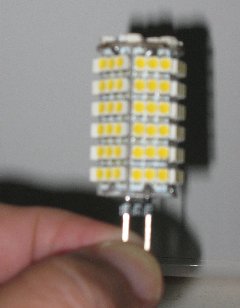Lighting For Emergency Communications
I use a dedicated 12 volt DC system to power as much as possible, such as my communications rigs, and also my lighting system.
12 Volts is versatile, as you can use a deep-cycle battery system charged by solar panels, wind generation or even a heavy DC power supply/charger driven by a gas AC generator. I also run a 12 volt system because you never have to “power down” like you need when you re-fill a gas generator. You can switch batteries very easily without interruption.
 I have experimented with all types of 12 volt lighting methods and have come to the conclusion that a system using SMD (surface mounted light emitting diodes) gives you the most illumination per watt. Using other 12 volt lights, such as fluorescent systems, can have a high rate of failure. You don’t want your lighting to go out in the middle of emergency work.
I have experimented with all types of 12 volt lighting methods and have come to the conclusion that a system using SMD (surface mounted light emitting diodes) gives you the most illumination per watt. Using other 12 volt lights, such as fluorescent systems, can have a high rate of failure. You don’t want your lighting to go out in the middle of emergency work.
I have had these fluorescent lights “blow” after only about 10 hours and it’s usually the electronics package built into each lamp that burns out because it’s electronics has to convert 12 volts DC into high voltage in order to make the bulb fluoresce (ignite) and the imported lamps (usually made in China or Hong Kong) are made with sub-standard components.
Most SMD systems, even though they are imported as well, last as long as 50,000 hours and aren’t as fragile as either fluorescent bulbs or other glass lights. You drop a fluorescent blub on the floor and it breaks in to a hundred shards of glass with dangerous chemicals on them…. you drop an SMD light on the floor and all you have to do is pick it up.
